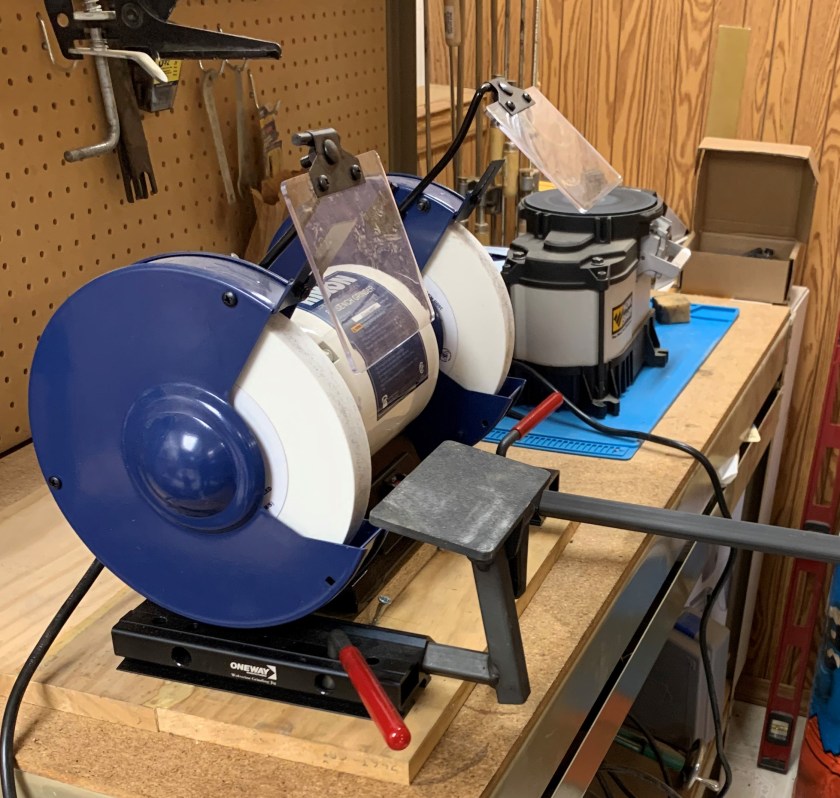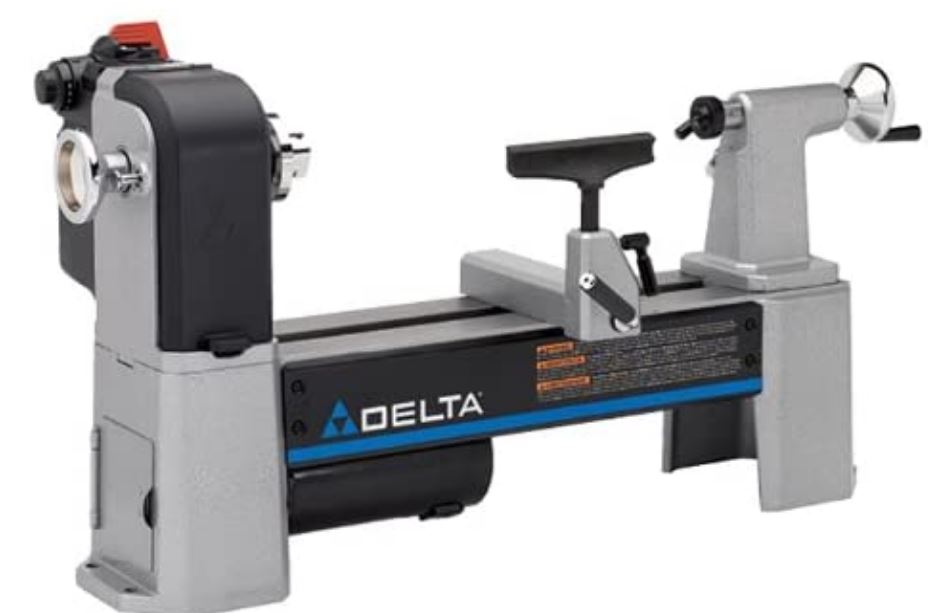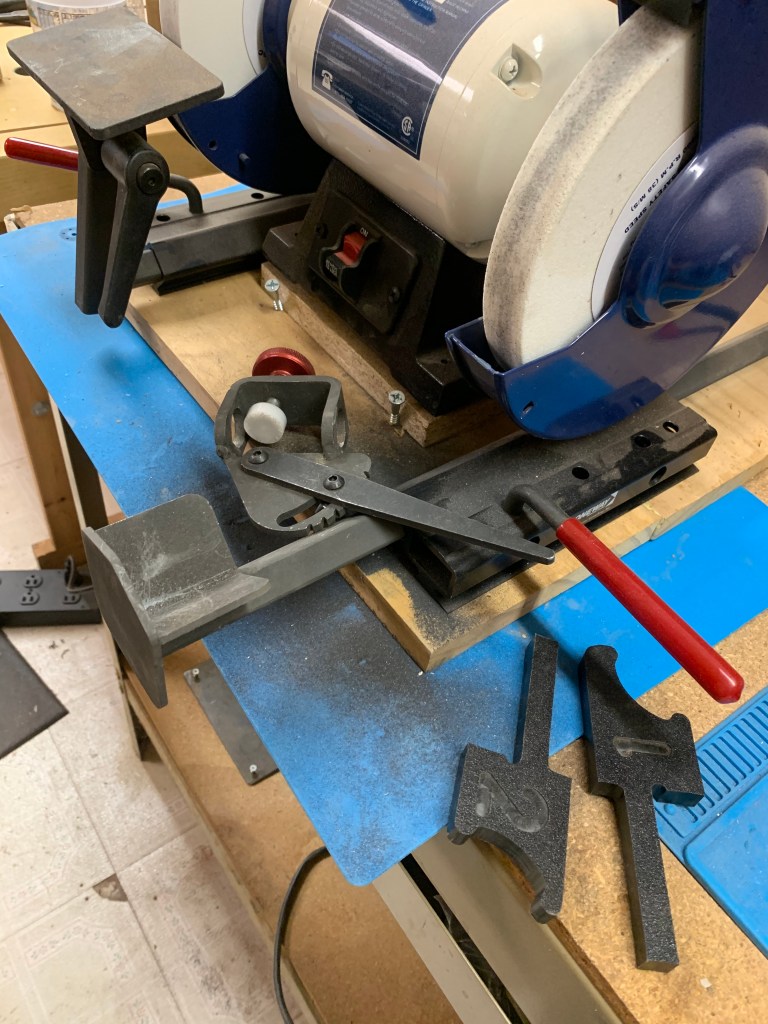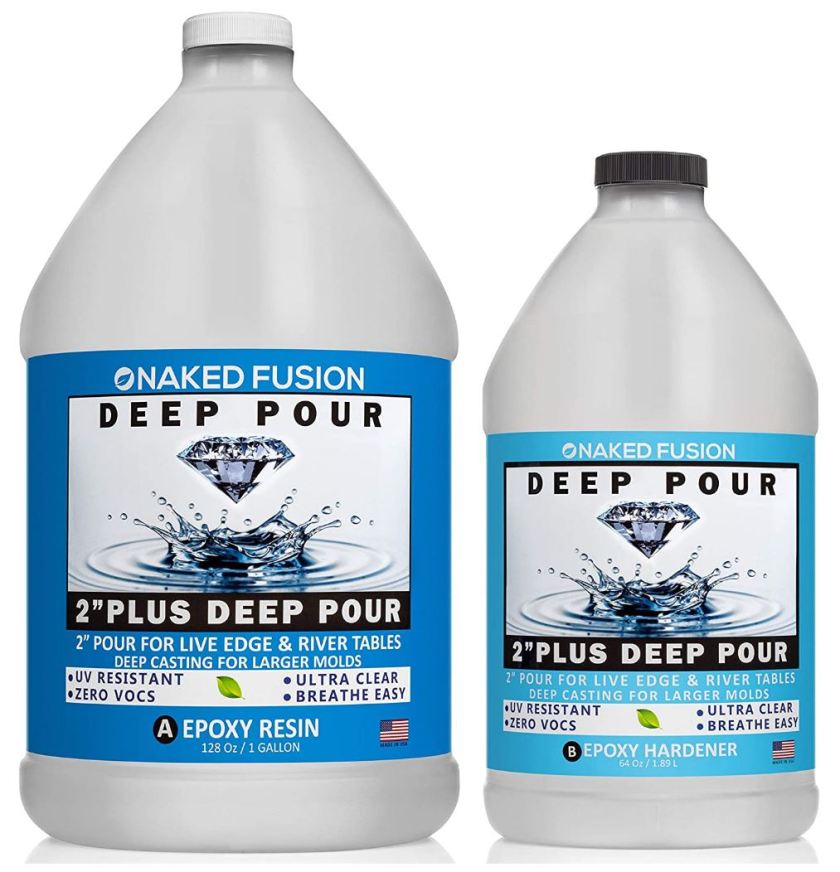We’re rapidly approaching the end of 2020 or, as some of us call it, “the year from hell”, so this is a good time to look back at some of the tools and products I’ve bought and used over the past year and see just how well they actually worked. I’ll use a scale of 1 – 10. A 1 means it is utterly miserable and a complete waste of money. A 10 means the tool is outstanding and exceeded my expectations in every way. Anything above a 5 means I feel it’s worth the money. All of the comments are based on my actual observations while using the tool in actual working conditions over a period of weeks or longer.
Rikon 10-3061 Bandsaw: Score – 8
The Rikon saw was one of the more expensive purchases I made this year, and one of the best. I’d wanted a bandsaw for many years but always managed to talk myself out of buying one until this year. Now that I have it, I don’t know how I got along without it. It’s become the 2nd most frequently used power saw in the shop, behind only my table saw.
The saw is nice all the way around. It’s well made, the fit and finish is good, it’s easy to adjust the blade guide bearings, the fence is decent. It has done everything I’ve wanted it to do, and has done it pretty darn well. I really like this saw.
There are a three issues that keep it from getting a 10, and all of them are relatively minor.
The dust collection system is pretty much worthless. Oh, it sucks dust out of the lower wheel housing, but that’s all it does. The table will quickly become thickly covered with dust, the lower guide bearings will become caked with the stuff. I need to get under there with a brush to clean the guides off every time I use it. Minor, but annoying.
I also think the saw is underpowered. The motor is certainly adequate for most things, but if you try to do anything challenging like trying to cut a four inch thick piece of ash it will quickly start to bog down and even stall. Of course the blade could be the issue there. I’m still using the blade it came with and it is not very good. I probably should have bought a good blade for it right off the bat. They aren’t that expensive.
Finally there’s the table. There’s nothing wrong with the table itself. The problem is the tilt system underneath it. It’s fiddly, flimsy and frankly not very well made or designed. I keep it locked at 90 degrees so it hasn’t been an issue for me, but for someone who needs to change the angle this could be a problem.
Delta 46-460 Midi-Lathe: Score – 4
The other really expensive tool I bought this year is the Delta 460 lathe. At first I was thrilled with the thing. But that was because my previous lathe was an absolute piece of junk that was the most badly made piece of equipment I’d ever seen. But the longer I’ve used the Delta, the more disappointed I’ve become. I really expected better from Delta, especially on a piece of equipment that costs $700. Oh, it works, but…
The tool rest was a piece of junk. Seriously. I literally threw it away. It was a rough cast piece of iron that hadn’t even been properly machined or finished. It was impossible to slid a gouge along it without it catching. The metal it was made from was so weak that the main support rod where it fits into the tool rest banjo actually bent the first time I hit a catch when I was turning. When you buy a $700 lathe you shouldn’t have to throw away the tool rest it comes with and spend even more money on a decent aftermarket one, but that’s exactly what I had to do.
The tailstock handwheel is seriously, almost laughingly sloppy. There is an utterly ridiculous amount of play in the threads in that thing.
The bed is nicely machined and flat, but only on the top side. On the underside it varies in thickness so badly that if I adjust the tool rest banjo to lock down so it’s tight on the one end of the bed, it will be so loose on the other end of the bed it won’t lock in place. I have to reach under and loosen or tighten the adjustment nut underneath the lock down whenever I move it from one end to the other. Same with the tailstock lockdown.
The forward/reverse motor switch is wired backwards. This apparently is a long standing issue with this lathe.
It has a variable speed control, which is very nice, of course. Or would be if the control would stay at the speed I set it at. It doesn’t. Any slight vibration in the lathe causes the speed control dial to move by itself. This isn’t just inconvenient it could be downright dangerous.
I really expected better from Delta.
Rikon 8″ Low Speed Grinder: Score – 9

Let’s see, what can I say about this thing…
Well, it’s a grinder. It works. Any grinder like this is little more than an electric motor with some grinding wheels attached. This one just works. It’s quiet, almost no vibration. No problems at all with it. (Why a low speed grinder instead of a standard one? Because a standard speed grinder spins the wheels so fast it will quickly heat up the metal you’re grinding to the point where it will turn blue and wreck the tool you’re trying to sharpen.) This one does exactly what it’s supposed to do. The price is relatively reasonable. Even the stock grinding wheels it comes with are pretty nice.
Wolverine Grinding Jig with Vari-Grind: Score – 8
While I’m on the subject of sharpening I need to mention the Wolverine grinding jig and vari-grind attachment. Doing just about any kind of wood working means you need sharp tools. And that means you’re going to have to have the equipment and skills necessary to sharpen those tools. In the case of some tools like bowl gouges, it isn’t a matter of just slapping a tool onto a sharpening stone or grinder. Bowl gouges and a lot of other tools don’t have straight cutting surfaces, they’re curved, and often have compound curves. So unless you’re very, very good at sharpening things like that free hand (I most definitely am not) you need some kind of help. In my case that’s the Wolverine grinding jig. It isn’t super expensive, it goes for around $90, and for sharpening some tools like bowl gouges you’ll also need the Veri-Grind attachment which goes for about $45, so the whole thing sells for about $135 or so.
And once I got it properly installed and set up, it works beautifully for sharpening my lathe tools. There’s no way I could get along without it, or at least without something similar. Once I got it set properly and figured out how to use it, it takes me probably less than a minute to sharpen a bowl gouge or scraper or skew chisel.
A word of warning, though. It is a bit fiddly to get set up properly. It requires everything, including your grinder, to be securely bolted together on a wood platform, and may require some disassembly of your grinder in some cases. But once it is set up and you learn how to adjust everything, it works really well.
Nova 4 Jaw Chuck: Score – 9

Now I suppose you could get along without a chuck to mount stuff to a lathe, but I don’t know how I’d get along without one. I use this thing on almost every single lathe project I’ve worked on since I got it. I have to admit that this is the only one I’ve ever owned, so I don’t really have anything to compare it to. But in the months I’ve been using it I’ve had absolutely zero problems with it. Once a piece of wood is locked down in it, it has never, ever come loose. It just plain works as advertised. I’m very pleased with it.

ShopFox Air Filtration System: Score – 8
I have absolutely no complaints about this thing either. It’s relatively quite, moves a lot of air through the filters, and does a decent job. It has a timer so I can let it run for 1 – 3 hours after I leave the shop to keep cleaning the air and it’ll turn itself off. I’ve noticed a considerable reduction in the amount of dust I’m seeing in rooms adjacent to the shop since I started using it. It works.
Starbond CA Adhesives: Score – 5
Now I don’t use a lot of CA type adhesives (so-called “superglue”). I don’t like them very much to begin with. The fumes they give off are highly toxic and extremely irritating to the eyes, and they really aren’t very good glues despite all of the hype. It’s also been my experience that CA type glues just don’t work very well on wood. Starbond is a decent CA glue. Period. You’ll find people on YouTube and elsewhere on the internet who rave about this stuff. Don’t believe them. This isn’t some kind of miraculous product. It’s a decent CA adhesive. But there’s nothing special about it. It works no better or worse than any other CA adhesive I’ve tried over the years.
Naked Fusion Deep Pour Resin: Score – 9
I like this stuff a lot. I’ve gone through about 2 gallons of Naked Fusion in six or seven different projects and it’s worked well every single time. It releases bubbles very well, is easy to mix, takes coloring agents nicely, and I’ve had no problems with it at all. It has no VOCs, has almost no odor, and works very well for making large castings. Using it does require some patience though because it can take up to 72 hours for a casting to completely cure depending on the depth of the pour and ambient temperatures.
“OB Shine Juice”: Score – 3
I debated with myself as to whether or not to include this because it isn’t a commercial product. You have to make it yourself. But it shows up a lot, especially on YouTube, where it is proclaimed to be the best thing ever when it comes to wood finishes for lathe projects. It isn’t. Not even close.
As I said you have to make this muck yourself. It’s equal parts of alcohol, shellac and boiled linseed oil. Usually they recommend Zinsser brand shellac. But not because it’s all that good. That’s because Zinsser seems to be the only company that makes pre-mixed shellac. You’re better off making your own. Home made shellac is so much better than the canned stuff, and so easy to make, I don’t know why anyone would bother buying it off the shelf. More about Zinsser in a moment.
Anyway, OB Shine Juice is supposed to be easy and fast to apply, and give you a very nice, shiny finish on a lathe project. I’ve tried different variations of this stuff, following the instructions to the letter both in making it and applying it. Yes, it will, eventually, give you a nice shine after you’ve practiced and gotten the formula right. (Hint – don’t use Zinsser’s canned shellac, make your own. A 2 pound cut seems to work best, maybe a 3 lb cut.) But it isn’t as easy as they claim, the shine dulls with time, probably as the linseed oil oxidizes, and there are better, faster and easier ways of doing it. Just about any of the commercial finishing products on the market will do a better job than this stuff. Even just slapping on a seal coat of thin shellac and then topping it off with nothing but carnauba wax is faster and will give you a better looking finish that is more durable and will give better protection to the wood.
And I should add that linseed oil is a serious fire hazard. This stuff can, and will, spontaneously combust.
Zinsser Shellac: Score – 1
Let’s talk about this stuff while I’m on the subject of wood finishes. You know I make my own shellac for sanding sealers and finishes. It’s simple, just dissolve shellac flakes in alcohol. That’s it. So I had never tried Zinsser Shellac until I started to experiment with OB shine juice. I used it because most of the recipes for the muck specifically call for Zinsser brand shellac. I eventually bought three different cans of this stuff at three different stores, all of them turning out to be bad, before I figured out what was going on and learned how to read the cryptic date codes.
Shellac has a limited shelf life. There is some disagreement about what its shelf life is, but I’d guess it is perhaps six months, maybe a year under ideal conditions. The problem is that acids in the shellac react chemically with the alcohol it is dissolved in, and the older it gets, the slower it is to dry and the less water resistant and easier to damage the final finish becomes. That’s one of the reasons I and a lot of other people who fiddle with wood recommend you make your own in small batches.
Now, Zinsser – I had to do some research. The company decided several things many years ago. First, it decided it was no longer going to put a shelf life on its cans. It used to have a recommended shelf life of 3 years. It also decided it was no longer going to put actual date stamps on its cans so now you can’t easily tell how old the stuff actually is. It also stopped putting the “cut” information on the cans. The “cut” tells you how much shellac is mixed with how much alcohol. The company used to print that what was in the can was a 3 pound cut, along with instructions on how to properly dilute it to make lighter cuts for other purposes. So what, exactly, is the cut of this stuff? I have no idea because they decided I didn’t need to know.
Now there is a code printed on the can, and if you can decipher it (Popular Woodworking’s website has an article about this here) you can figure out when it was made. Turns out that every single can I bought when I was experimenting turned out to be more than 5 years old. In one case the code indicated it had been made in 2012.
So for removing easy to read dates from its cans, removing shelf life recommendations on a perishable product, and removing information about how concentrated its product actually is, i.e. the cut info, Zinsser Shellac gets rated a 1 out of 10.
Make your own shellac. It is incredibly easy and relatively inexpensive.
And – well, I have a short attention span. I’m getting bored, so I’m going to wrap this up for now.
I hope you find this stuff useful. Questions and comments are always welcome.






Hi Grouchyfarmer:
I did not want the year to pass by without saying thank you for all of your beautiful writings. They have filled my days with details of many wonderful things: your handicraft work, the weather, the garden and chit-chatters. I don’t respond, but I love reading everything you write. Thank you.
Hidden Eyes!
73’s,
KC30IA (never on- just got license as some self-challenge)
LikeLike
Thank you very much 🙂
LikeLike
I’m not into woodworking but I do enjoy following your projects. This end of year wrap up was very well done.
Hope to hear more from you in 2021.
LikeLike
Thanks 🙂 Generally this blog just follows along with whatever has been occupying my time at the moment. I’m still playing with amateur radio but I haven’t been doing anything even remotely interesting recently in that area. And photography – mostly I’m interested in nature photography and once the frost hit and everything died back I haven’t been doing much there either. So with the weather turning cold, me being in a high risk group for the virus and all that, I’ve been hanging out in the workshop fiddling with wood.
One of these days I should talk about JS8Call, that’s what I’ve been using mostly when I’m on the radio. That mode has been proving to be quite interesting. What’s been really frustrating of late is that almost every morning PSKReporter shows me reaching Australia using JS8 with about 5 – 8 watts power, but I can’t hear them.
LikeLike